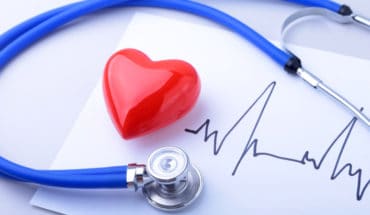One of the largest organs in the human body, the liver is located on the right side of the body underneath the lower ribcage. It converts nutrients into substances that the body can use and helps to remove toxins from the blood. In fact, the cone-shaped liver contains around 13% of our body’s total blood supply at any one time. The liver has over 500 functions but, according to Dr Jane Collier, Consultant Hepatologist, John Radcliffe Hospital, Oxford, some of the most important are making proteins, vitamins and sugars needed for survival as well as removing waste products.
How does the liver deal with alcohol?
A normal healthy liver can process alcohol at a rate of 1 unit per hour
As soon as alcohol hits your stomach and goes into the bloodstream it passes through the liver. The liver contains enzymes that break down alcohol into various chemicals before being further broken down into water and carbon dioxide. These are passed out from the lungs and in urine. A normal healthy liver can process alcohol at a rate of 1 unit per hour, however much you drink.
What can go wrong with the liver if you drink too much?
By far the most common cause of liver disease is too much alcohol. Excessive drinking can lead to three types of liver conditions:
Fatty Liver
Drinking heavily over a long period of time can lead to fatty deposits, in which the liver cells become engorged with excess fat.
Alcoholic Hepatitis
Meaning inflammation of the liver, hepatitis is characterised by the destruction of a number of liver cells and the presence of inflammatory cells in the liver tissue.
Cirrhosis
This disease, the result of long-term continuous liver damage, destroys healthy liver cells leaving scar tissue. Smooth liver tissue is replaced by irregular nodules and the liver becomes much harder than normal. Once cirrhosis develops it’s usually considered irreversible, even if the inflammation, which caused it improves.
What are the symptoms?
‘There are often no symptoms of liver damage until the liver has become cirrhotic and is starting to fail,’ says Dr Collier. ‘When this occurs jaundice, swelling of the abdomen, bleeding from the stomach and confusion can occur.’ Other symptoms can include weight loss, sickness and loss of appetite. There may also be dark urine and a vomiting of blood. If you experience any of these you should seek medical help urgently.
How is it detected?
A liver function blood test will find out whether your liver is damaged. This measures enzyme levels, which, if the damage is substantial, will be raised. Further tests such as an ultrasound and liver biopsy will help determine just how badly.
What is the treatment?
Avoiding alcohol is the best way to deal with alcohol-related liver disorders. Cirrhosis, however, cannot be cured but treatment can be provided to slow the progress.
If the liver is extremely damaged through long-term cirrhosis it may stop working completely. In this situation, a liver transplant is the only option.
How can we drink safely?
Around 2.9 million of the UK’s adult population are estimated to be dependent on alcohol. Alcohol-related liver disease is the fourth leading cause of death in adults between the ages of 45 and 54. Hospital admissions for alcoholic liver disease have more than doubled in a decade. To reduce these figures, women are advised not to drink more than 2-3 units of alcohol a day or 14 units a week – while men no more than 3-4 units a day or 21 units in a week. The units should be spread over the week, not drunk in one binge session (five or more units in one go).
Can you protect the liver?
The liver has a unique ability to regenerate and keep going even if it loses as many as 80 percent of its cells through disease or surgery. However, it can only survive limited damage so it’s important to keep it healthy. A sensible diet and around 2.5 litres of water every day, will help but, according to Dr Collier, will not prevent you from getting liver disease if you continue to drink over the limit. To protect the liver you have to keep within the recommended safe alcohol limits. You should also give your liver 48 hours to recover after a heavy drinking session.
For further information visit: www.britishlivertrust.org.uk
- New lipid-based pathway discovered as key to memory formation - 25th June 2025
- Crucial link could explain how Alzheimer’s takes hold - 25th June 2025
- Understanding Your Mind Can Improve Daily Life - 25th June 2025







